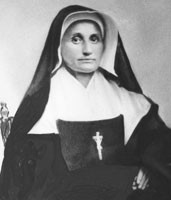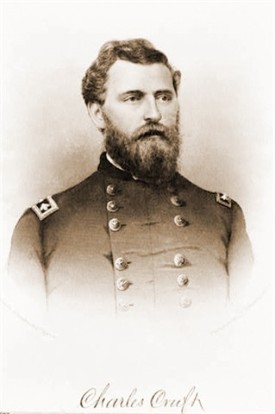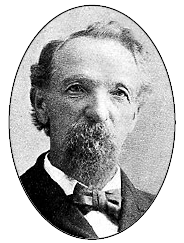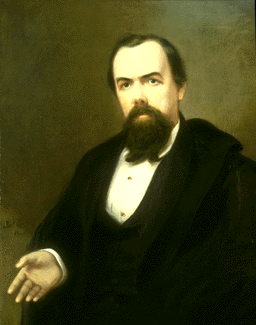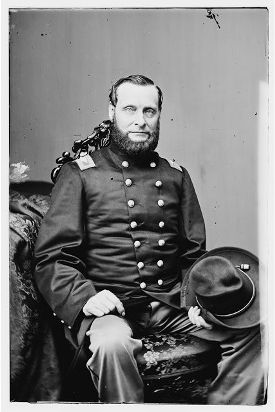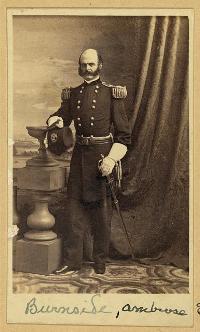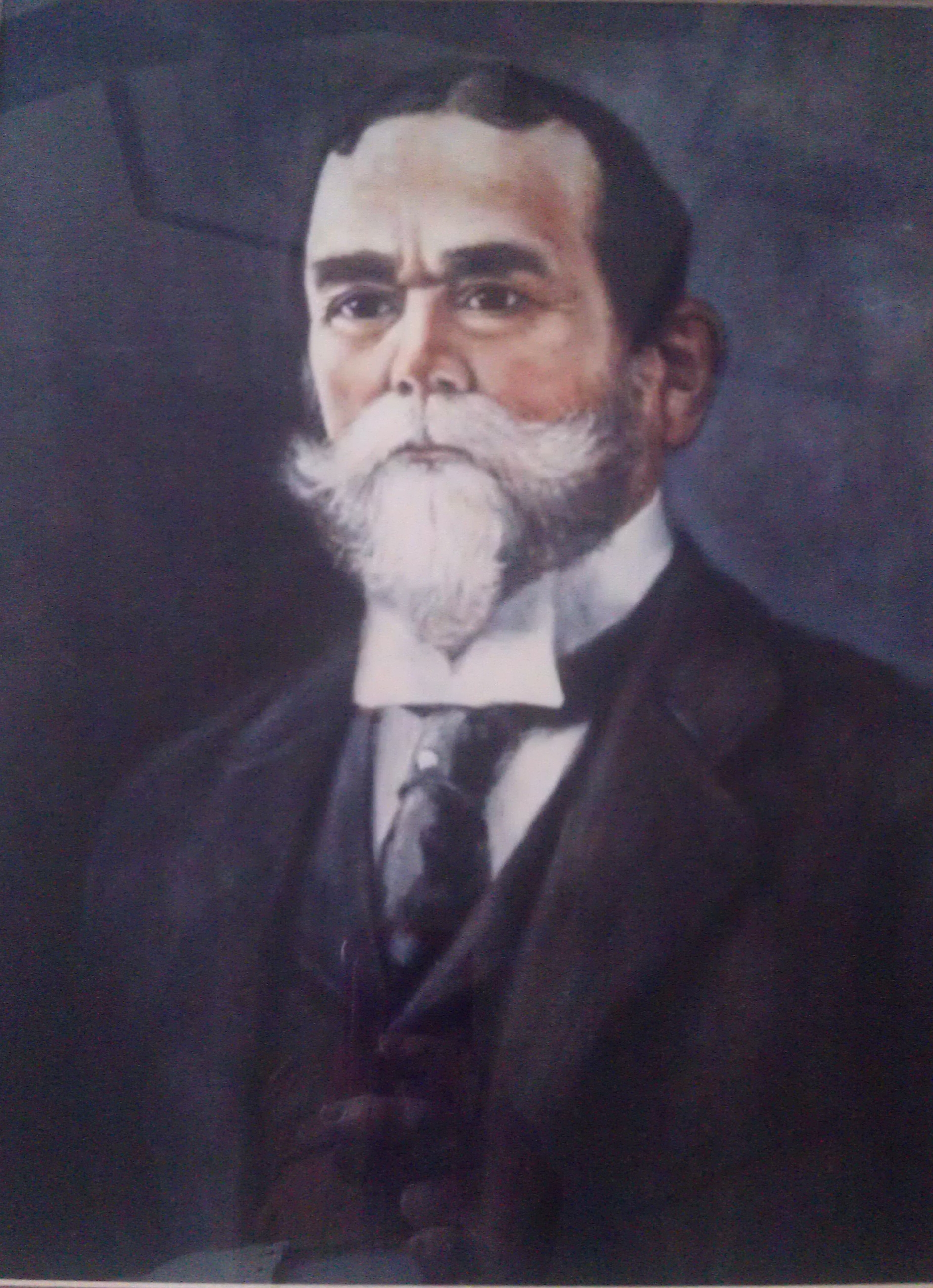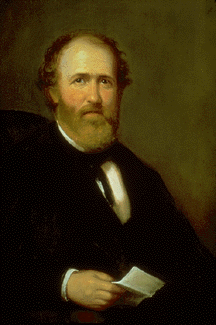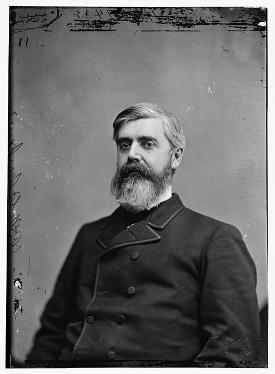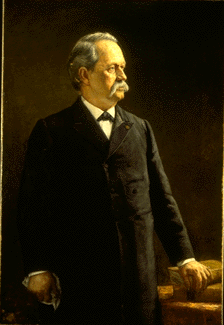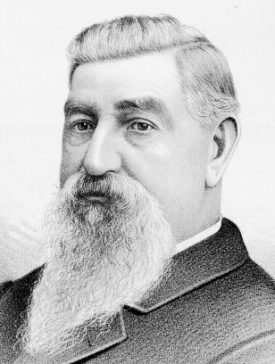President Abraham Lincoln
Lincoln lived in Indiana between the ages of seven and twenty-one, thus spending
much of his youth as a Hoosier. Lincoln, of course, was our sixteenth president.
Today, Lincoln is known as one of the best presidents in our nation's history.
During the Civil War, Lincoln's main goal was to preserve the Union at any cost.
As time progressed, Lincoln also became convinced it was his duty to abolish
slavery in the United States. Lincoln was assassinated shortly after the end of
the Civil War; however, his legacies of wisdom and leadership live on.
Mother Mary Cecilia Bailly
Mother Mary Cecilia Bailly was the Superior General of the Sisters of Providence
during the Civil War years. The Sisters of Providence are located in West Terre
Haute, Indiana. In 1861, Governor Oliver P. Morton asked the Sisters of
Providence to take over administrative duties at the Military Hospital in
Indianapolis that cared for the injured soldiers of the war. Mother Mary Cecilia
Bailly made the arrangements to help and the sisters were placed in charge of
all domestic jobs at the hospital.
Sister Athanasius Fogarty
Sister Athanasius Fogarty was a nun of the Sisters of Providence in West Terre
Haute, Indiana. She was born in Ireland in 1834. Sister Fogarty moved to Terre
Haute in 1855 and took her vows in 1859. Sister Fogarty was the directress of
the Indianapolis Military Hospital during and after the Civil War from 1865
to1868. She was very passionate about her work. Sister Fogarty helped many
soldiers become healthy or was by their side offering comfort as they passed.
Before and after her service, she was a teacher for primary grades.
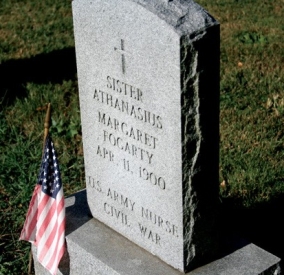 |
Richard W. Thompson
Colonel Thompson was born on June 9, 1809 in Virginia. He had a law practice in
Terre Haute, Indiana. He served as the acting Lieutenant Governor of Indiana and
later as a Congressman from Indiana, first elected in 1841. He was well regarded
in Washington because he was a confidant and close friends with President
Abraham Lincoln. Thompson went on to become the Secretary of the Navy under
President Rutherford Hayes. After Thompson left Hayes' Cabinet, he became
chairman of the American Committee of the Panama Canal Company. Thompson passed
away on February 9, 1900.
Charles Cruft
Charles Cruft was born in Terre Haute, Indiana in 1826. Cruft graduated from
Wabash College in 1843. After being a civilian witness at the Battle of Bull
Run, Cruft helped organize the 31st Indiana Infantry and became its
Colonel in September, 1861. Later in the war, Cruft was promoted to Brigadier General. The 31st Indiana
Infantry was engaged in battles at Fort Donelson, Shiloh, Stone River,
Chickamauga, Richmond, Perryville, Lookout Mountain and Atlanta. President
Lincoln appointed Cruft as Brevet Major General of Volunteers. Cruft reached the
highest military rank of any soldier from Vigo County who served in the Civil
War.
Phillip Monninger
Phillip Monninger was born in Germany in 1831. He moved to Terre Haute, Indiana
in 1852 where he managed a saloon. Monninger was Captain of Company E of the 32nd Indiana
Regiment, which was the first German regiment in Indiana. Captain Monninger was
eventually discharged from the military because of a disability. When he arrived
back in Terre Haute, he opened a winery called P.H. Monninger & Sons. They made
wine with imported plants from Germany.
Jefferson Columbus Davis
Davis was born in Memphis, Indiana in 1828. He originally
enlisted in the 3rd Indiana Infantry during the
Mexican-American War. Eventually, he became a First Lieutenant,
serving as a member of the garrison at Fort Sumter. In 1861,
Governor Oliver Morton appointed Davis as the Colonel of the 22nd
Indiana Infantry Regiment. Davis led the regiment in campaigns
at Stones River, Chickamauga, Chattanooga and Sherman's March.
Lew Wallace
Lew Wallace grew up in Covington, Indiana. At a young age, he became interested
in the military by watching his father train local people with military drills.
The community was afraid of a Native American attack. In 1846 Wallace joined the
1st Indiana Volunteer Infantry during the Mexican-American War. He
became the Colonel of the 11th Indiana Volunteer Infantry during the
Civil War. Eventually, he was promoted to become the Major General of the U.S.
Volunteers. Wallace was a significant figure involved in battles such as Fort
Donelson, Shiloh and the Battle of Monocracy. In 1865, Wallace was assigned as second officer of the military court, which
tried those involved in the assassination plot against President Lincoln. After he left
the military, Wallace authored seven major works, including Ben-Hur: A Tale of the Christ , the best-selling
novel of the 19th century. Wallace held a
number of important political posts during the 1870s and 1880s. He was the
governor of the New Mexico Territory from 1878 to 1881, and served as U.S.
Minister to the Ottoman Empire from 1881 to 1885. In
1898 General Wallace tried to re-enter the military one last time. He
volunteered for service in the Spanish-American War but was turned down because of
his age.
Governor Oliver Perry Morton
Oliver Perry Morton was the 14th Governor of Indiana. He
was in office from January 16, 1861 to January 23, 1867. Morton
was the Governor of Indiana during the Civil War and the
immediate reconstruction period. He was a true Union supporter.
He quickly suppressed the Confederate sympathizers during the
Civil War. Morton was a dedicated supporter of President Lincoln
and was quick to assist the President when Lincoln requested of
troop and materials. Morton was one of the first governors in
the north to respond to the President. Morton had also been
accumulating troops prior to the request, in anticipation of
war. Governor Morton is widely seen by historians as being one
of the best governors ever to serve the Hoosier State.
Benjamin Harrison
During the Civil War, Benjamin Harrison was a Union Brigadier General in
the XX Corps of the Army of the Cumberland. He is best known for serving as
the 23rd President of the United States. Harrison was a surprise
nominee for president in the election of 1888. He was the second choice of most
delegates yet defeated Grover Cleveland. Harrison is viewed by some as an
ineffective president because he failed to create solid relationships with
monopolies and political leaders during the Gilded Age. However, Harrison did
manage to get two very important bills passed through Congress. The Sherman
Anti-Trust Act, which limited the powers of cartels and monopolies still is the
basis for anti-monopoly law. He also helped pass the McKinley Tariff, which was
used to protect makers of domestic products from foreign competition.
Levi and Catherine Coffin
After moving to Fountain City, Indiana, Levi Coffin began farming and soon
opened a general store. Coffin began helping slaves in the Underground Railroad
in 1826. Everyone in the town was aware of his activities, but were afraid to
join him. Soon, Coffin and his wife, Catherine, convinced people in the town to
join them. Coffin raised over $100,000 for the
Western Freedman's Aid Society to provide aid to the free blacks. The
Coffins helped over 2,000 slaves escape. Levi was referred to as the President
of the Underground Railroad. His home was thought to be the Grand
Central Station of the Underground Railroad. Levi and Catherine Coffin were not directly involved in the Civil War; however,
they had major influence on the home front by creating awareness of slavery in
the south. Eventually, the issue of slavery became one of the influences on the
cause of the war itself. Eventually, the Fifteenth Amendment made slavery
illegal. The Fifteenth Amendment had a negative impact upon the southern economy
because it eliminated cheap labor; however, it served as the first step in
freeing African Americans from their centuries of servitude.
Abel and Lovina Streight
Abel Streight was appointed Colonel of the 51st Infantry. His wife,
Lovina, joined him on his mission to the south, bring their young son along with
them. The 51st engaged in battle at Franklin, Nashville and the
Battle of Day's Gap; in which Streight was successful but managed to get
captured. He was ina Confederate prison camp for ten months and eventually
escaped via a tunnel. Lovina nursed the sick and dying on the battle field and
was referred to as the "Mother of the 51st". She was captured three
times by Confederate troops.
Ambrose Burnside
Ambrose Burnside was born in Liberty, Indiana in 1824. Most people do not
realize that Burnside was from Indiana because he grew up in South Carolina.
Burnside was appointed to the United States Military Academy and fought in the
Mexican-American War. He was in control of a Rhode Island regiment at the
beginning of the Civil War and by August 1861, he was commissioned Brigadier
General of Volunteers in Rhode Island. Burnside was assigned to command the Army
of the Potomac on November 7, 1862 but with his failed campaign at
Fredericksburg, he held the position for less than three months. Some of the
famous battles that he was involved in were the First Battle of Bull Run,
Burnside's North Carolina Expedition, Battle of Roanoke Island, Battle of New
Bern, Maryland Campaign, Battle of South Mountain, Battle of Antietam, Battle of
Fredericksburg and the Knoxville Campaign. After the war, he was a senator and
governor for Rhode Island.
John Hay
John Hay was born in Salem, Indiana in 1838. He studied law at Abraham Lincoln's law office and became Lincoln's personal secretary during his presidency. In 1897, Hay was appointed ambassador to Great Britain. He also served as Secretary of State under Presidents McKinley and Roosevelt. (Photo courtesy of Washington County Historical Society, John Hay Center, Salem, Indiana)
Governor Conrad Baker
Conrad Baker was Indiana Governor Oliver Morton's Lieutenant Governor during the
Civil War. He served as Indiana's 16th Governor from 1867 to 1873. During his term, Baker focused on creating institutions to
assist veterans and their families after the Civil War.
John Parker Hawkins
John Hawkins was born in Indianapolis, Indiana in 1830. He graduated from West Point. Hawkins was a Union
Army Brigadier General of Volunteers during the Civil War. He commanded the 1st Division of the
U.S. Colored Troops from 1864 to 1865.
Jeremiah Cutler Sullivan
Sullivan was born in Madison, Indiana in 1830. He worked his way all the way up to become
Brigadier General of Volunteers in the Civil War. During the Siege of Vicksburg,
Sullivan served as acting inspector general on the staff of Ulysses S.
Walter Quintin Gresham
Walter Gresham was born in Harrison County in 1832. He was promoted to Colonel
for the 53rd Indiana during the Vicksburg Campaign. Afterward,
Gresham was promoted to Brigadier General and was subsequently wounded, ending
his military career. Once back in Indiana, he pursued a law career. When Ulysses S. Grant became president in 1868, Gresham was appointed Judge of the
U.S. District Court for Indiana. He considered running for President in 1884,
but decided to endorse Grover Cleveland instead. President Cleveland appointed
Gresham to the U.S. Court of Appeals in 1885. Gresham also was the Secretary of
State in Cleveland's administration in 1893.
Alvin Hovey
Alvin Hovey was born in Mount Vernon, Indiana in 1821. He served in the
Mexican-American war but did not see action. Hovey passed the bar in Indiana and
opened his own law practice. Hovey served as the U.S. District Attorney for
Indiana from 1856-1858. He was commissioned Colonel of the 24th
Indiana Volunteers during the Civil War. He led troops in the Battle of Shiloh,
Siege of Corinth, Battle of Champion Hill, Siege of Vicksburg and The Atlanta
Campaign, earning the praise of General Ulysses
Grant.
John Franklin Miller
Miller was born in South Bend, Indiana in 1831and eventually established a law practice in South Bend. Miller was elected to the State Senate in1861 and
resigned to serve the military during the Civil War. Governor Oliver P. Morton commissioned
Miller as Colonel of the 29th Indiana Infantry. Miller led troops in the Battle of Shiloh, Siege of Corinth,
Tullahoma Campaign and the Battle of Nashville. Miller lost his eye in the Tullahoma Campaign and was promoted to Brigade General after the Battle of Nashville.
Mahlon Manson
Mahalon Manson served in the Mexican War beginning in 1846. He was elected as an Indiana
State House Representative and was a delegate to the 1856 Democratic National
Convention. During the 1860 election, he was a supporter of Stephen
Douglas; however, when war broke out Manson joined the Union cause. He recruited
companies for General Lew Wallace's 10th Indiana Regiment. Manson was
shortly after appointed Commanding Colonel and went on to earn a commission as
Brigadier General. He was injured and later resigned. After his service in the
Civil War, Manson was an active participant in government. Manson served one
term in the U.S. House, was elected state auditor, Indiana's Lieutenant Governor
and served in the 7th District IRS headquarters in Terre Haute. He
was very active in assisting and respecting veterans. Manson dedicated the
Soldiers and Sailors' Monument in Indianapolis.
Citation:
Vannest, C. (1928).
Lincoln the Hoosier.
St. Louis-Chicago: Eden
Publishing House.
|











